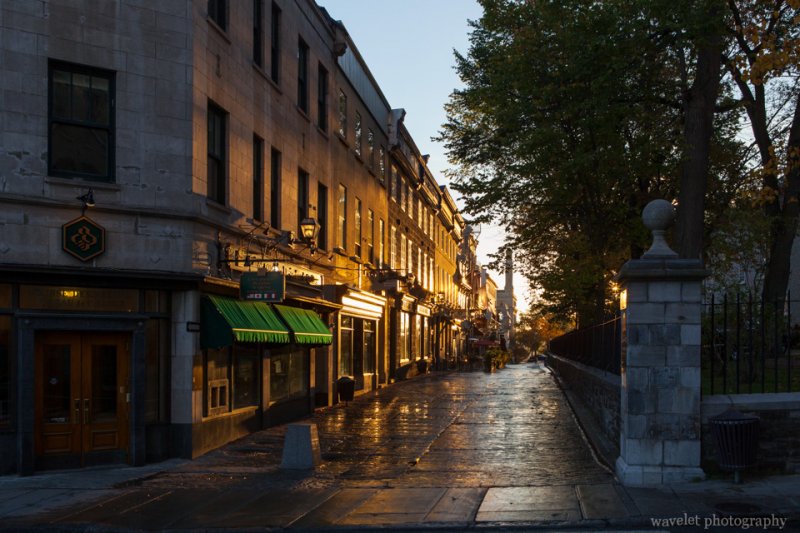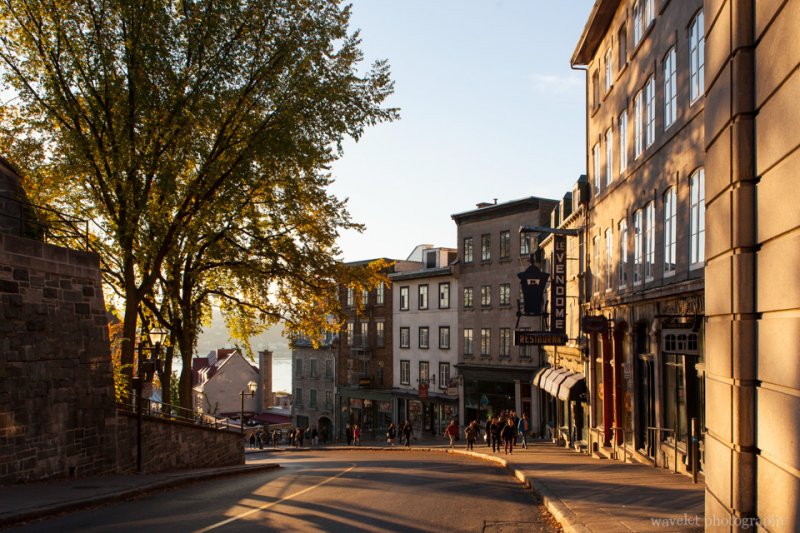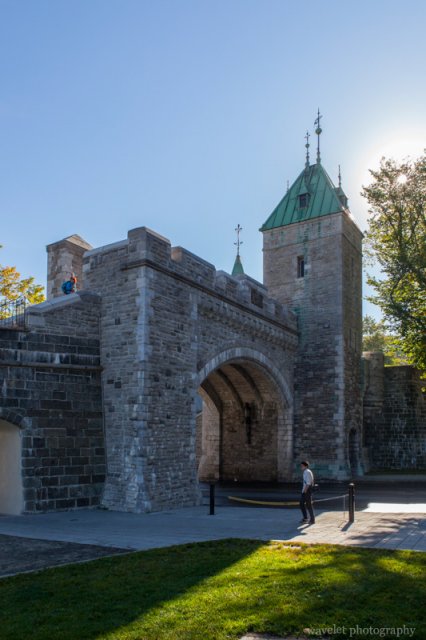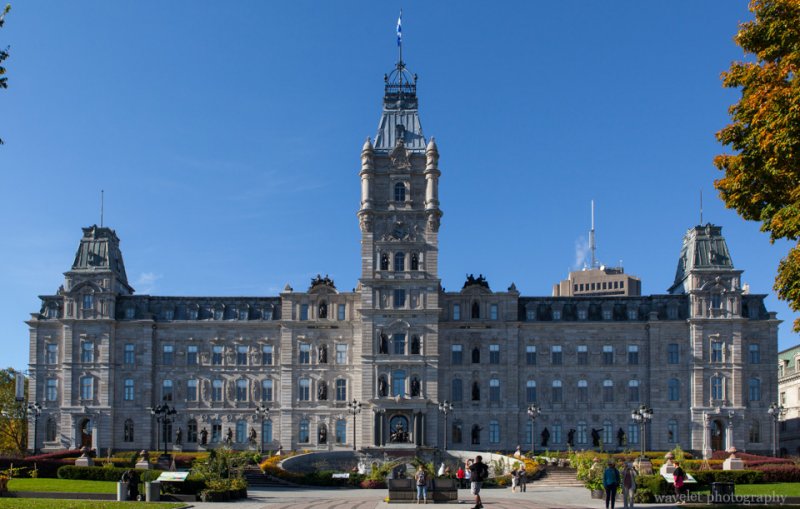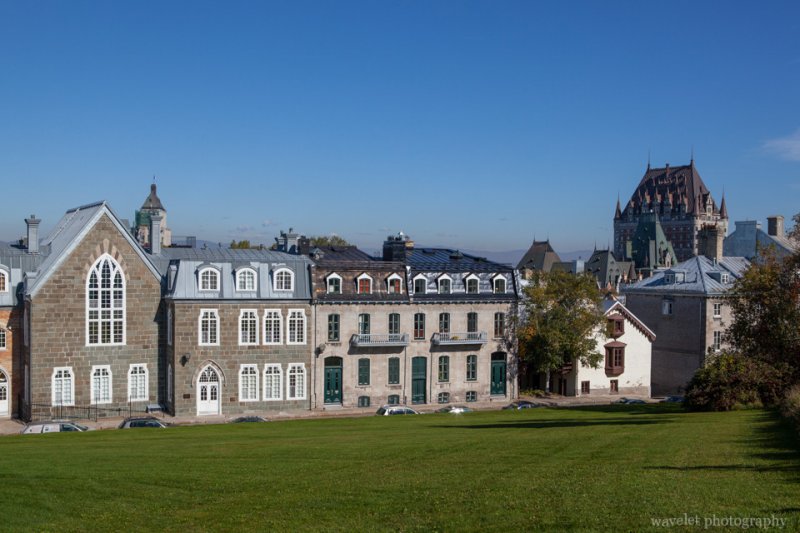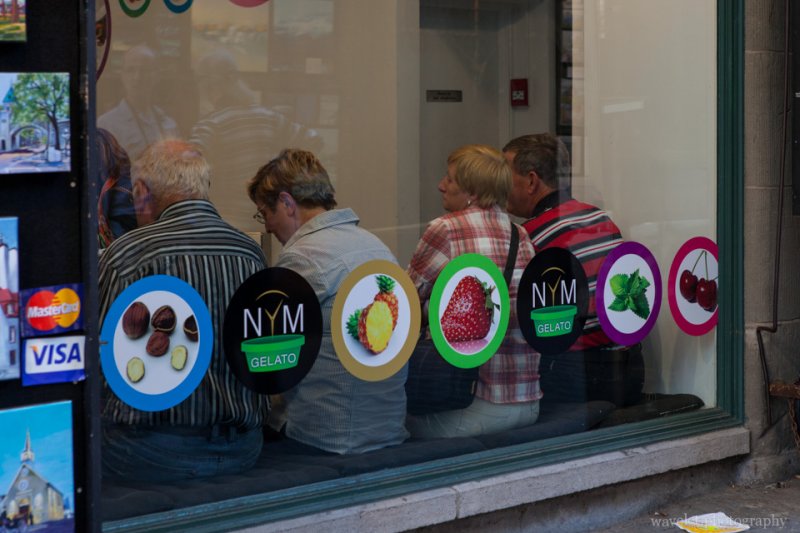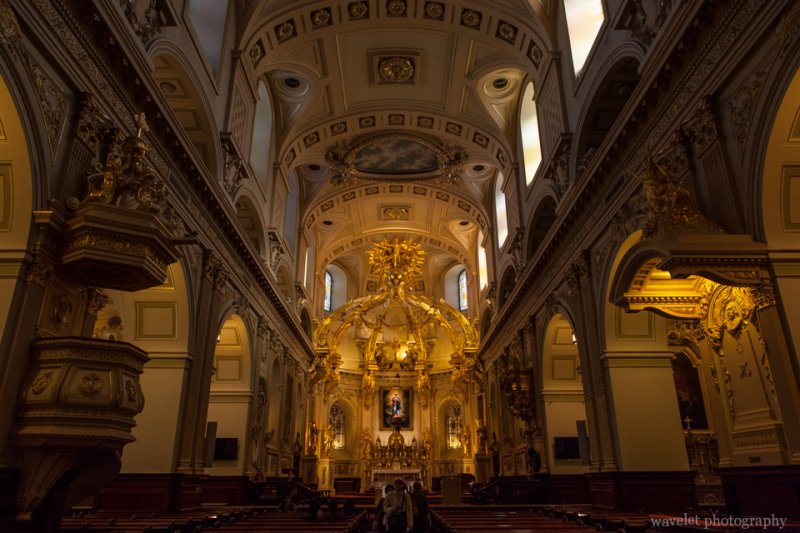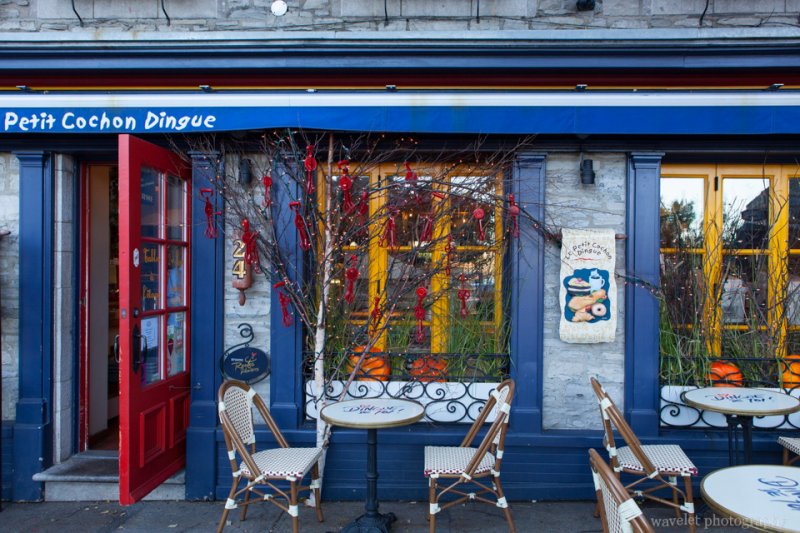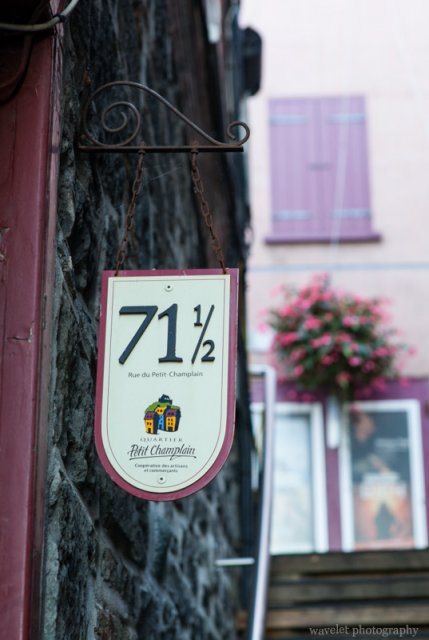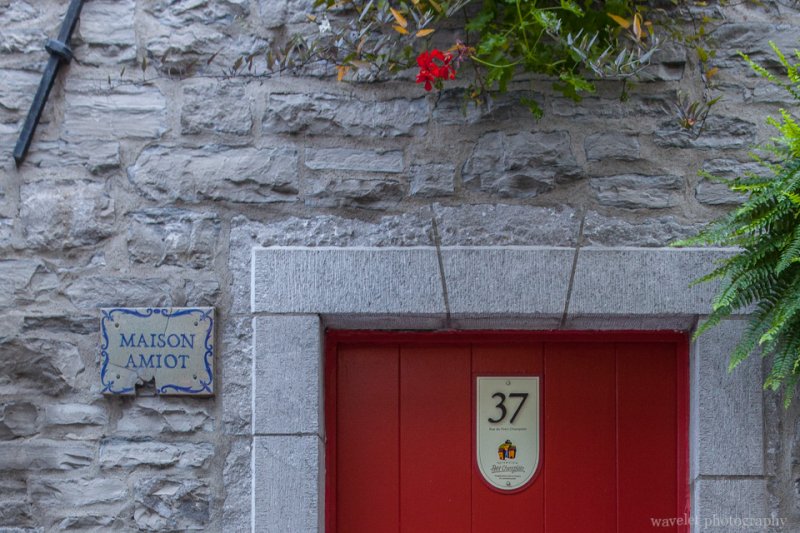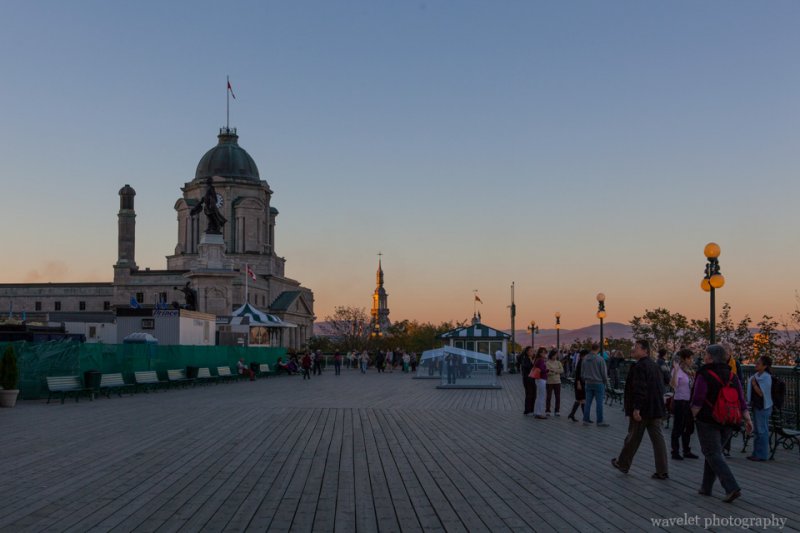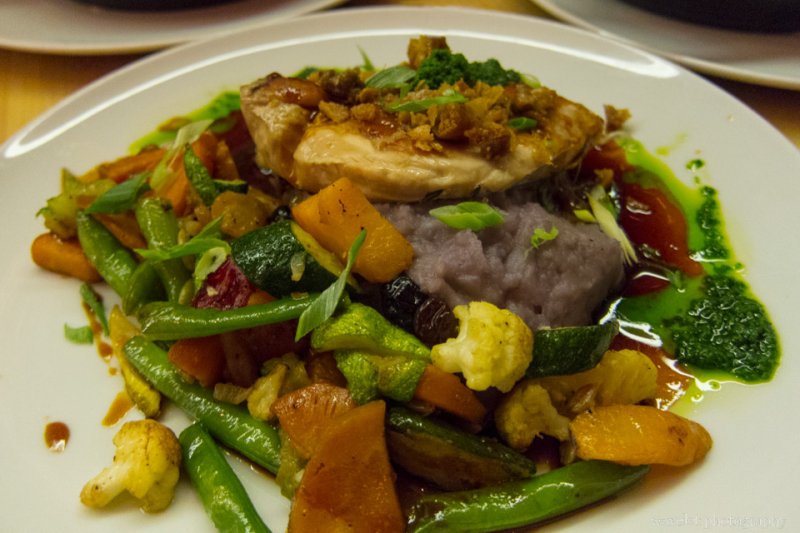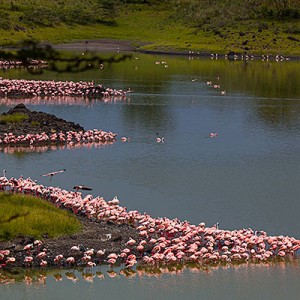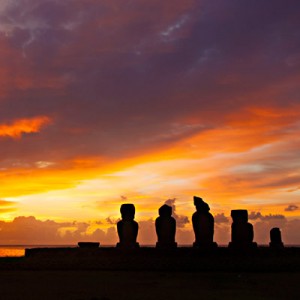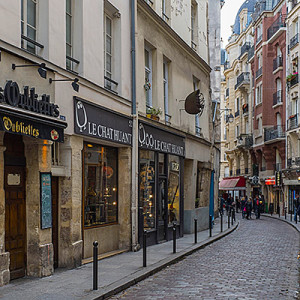2013.9.30Early morning is always a good time to explore Old Quebec, or maybe any city. The reflection of early sun glow illustrated the quiet street. Even the most popular Petit Champlain saw no single person, no store opened either. Occasionally, there were other visitors or early runners enjoying the morning, we smiled, said “bonjour” and passed by. It’s a beautiful feeling.
Old Quebec consists of the Upper Town on high land, Cap Diamant, and Lower Town by the St. Lawrence River. They are connected by Côte de la Montagne street.
The Lower Town features some most popular attractions of Quebec City, including Petit Champlain, Notre-Dame-des-Victoires church, Fresque des Québécois and countless small shops and restaurants. It’s very crowded in daytime, but now I was almost all alone by myself.
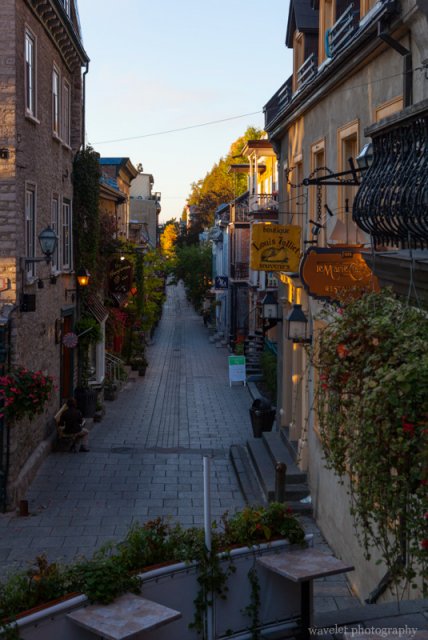
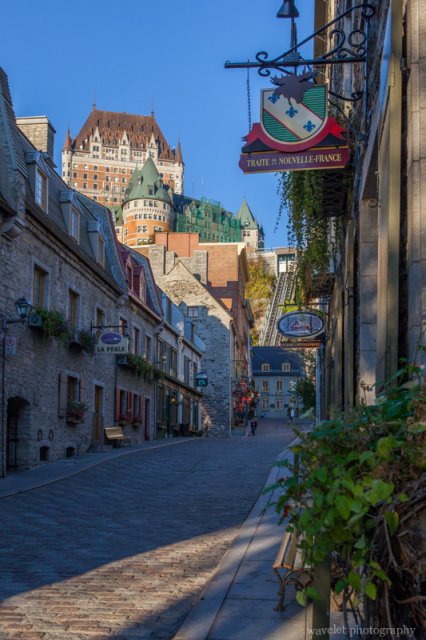
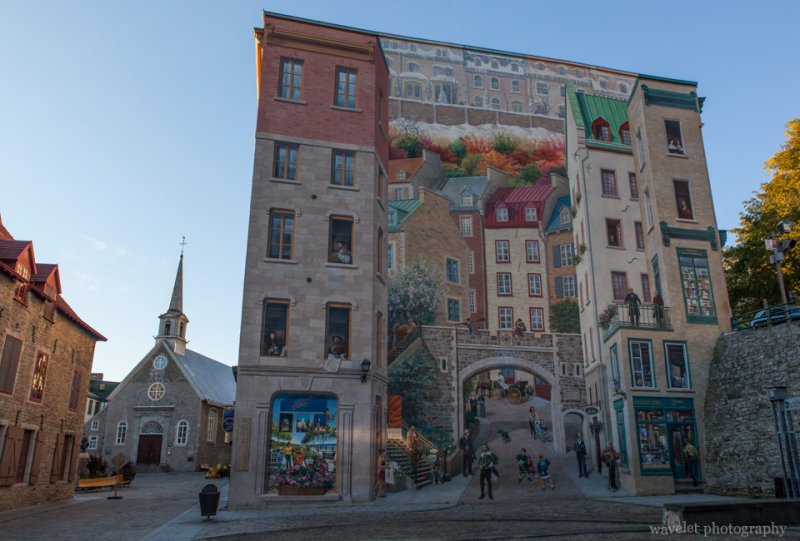
Our morning activities were focused on the Upper Town. Old Quebec is surrounded by the fortified walls. We walked through Porte St. Louis. It’s one of the oldest gates of the ramparts. It had been rebuilt and replaced for several times in its 300 years of history.
The parliament of Quebec City is in a square shape. The main building has a central clock tower stands 52 meter (171 feet) high.
The Citadelle of Quebec is a fortress built in the early 19th century to protect the city against possible American attack. The fort is in the star-shape, which evolved from the round-shape fortification and provide better defense against cannons. To get to the core, you have to walk around inner walls. We also circled around the fortress along the external premises. I have to say that we were not very impressed, not much to see.
We had lunch at Savini Resto-Bar at 680 Rue Grande-Allée East. These are a couple of street blocks with restaurants and hotels outside of Old Quebec wall. Savini offers a fun dining environment, but the food was so so.
We spent the afternoon in Old Quebec, mostly in the Lower Town.
Besides Côte de la Montagne, an easier option to commute between Upper Town and Lower Town is by the cable car connects Cap Diamant and Petit Champlain. We were only a few minutes too late to catch the last car so we had to climb by ourselves. At the back of Château Frontenac, there is a long promenade known as Terrasse Dufferin. Along the riverfront, the boardwalk is 60 meters above the water. It’s a perfect place for a stroll in sunset and overlook the St. Lawrence River.
We had the dinner at Chez Boulay on Saint-Jean Street. The food is inspired by the nordic cuisine. It’s colorful, creative and delicious.
